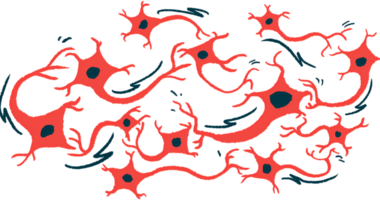New insights into motor control in brain may help in Parkinson’s
Switching, stopping involve distinct cognitive processes, study shows

Switching actions and stopping movements involve two distinct cognitive motor processes, according to a study that combined computer modeling with tasks performed by healthy people. The findings have implications for people with Parkinson’s disease, who experience longer reaction times and delays when they want to start, stop, or switch movements, the researchers said.
“From a clinical perspective, if we understand how the brain regulates actions, and if we understand how Parkinson’s affects these mechanisms, we can create better clinical treatments for patients,” Vasileios Christopoulos, PhD, the study’s senior author and an assistant professor of bioengineering at the University of Southern California, Riverside, said in a university news story.
The study, “Computational mechanism underlying switching of motor actions,” was published in PLOS Computational Biology.
Parkinson’s is caused by the progressive loss of dopaminergic neurons, the nerve cells in the brain that produce dopamine, a signaling molecule that plays a crucial role in initiating and coordinating movement, acting as a trigger for voluntary actions.
A loss of these neurons in Parkinson’s gives rise to motor symptoms, such as freezing, slowness of movements (bradykinesia), tremor, and delays in starting new actions or stopping or switching movements.
Motor control and the brain
Christopoulos’ research uses computer-based methods to focus on how the brain selects, stops, and switches movements. In particular, the researchers asked, is the process in the brain that switches actions the same one it uses to stop movement?
“Traditionally, psychologists believe that switching is an extension of stopping,” Christopoulos said. “It’s what we call ‘go, stop, go.’ You go. You stop and you switch to the new action.”
But “we believe that — especially when you have to perform something really fast — your brain doesn’t do that,” he said. “Instead, the new action suppresses your current action without using another mechanism to inhibit it. Stopping and switching are two different cognitive motor processes.”
The team built a computational model of the brain to simulate how it decides to stop an ongoing action and how it starts a new action. To do that, they asked 20 adults (11 men and nine women) who were neurologically healthy to perform three tasks — related to decision-making, stopping, and switching — that involved reaching for targets on a screen using a joystick.
The results “suggest that unlike the stopping process, switching does not necessitate a proactive pause mechanism to delay movement initiation,” the researchers wrote.
The mechanism for switching ongoing actions depended on whether the new target was known before the switch signal. That is, participants’ reaction times were slower for switching actions when they were aware of the new target location before the switch signal than when they were unaware of it.
“This suggests that when the new target location is unknown, an independent pause mechanism may be engaged to suppress the ongoing action,” the team wrote.
Conversely, when the new target location was known, switching occurred without activating the pause mechanism, “indicating a different implementation pathway,” the researchers wrote. In other words, the switching movement was not an extension of stopping but a unique action that actively suppressed the previous movement.
“Our study provides novel insights into the computations of action regulations that involve action [suppression]” and “opens new doors for further investigation of the action regulation mechanisms in neurophysiological studies,” the researchers wrote.
The team is working with Parkinson’s patients to investigate this mechanism in patients undergoing deep brain stimulation (DBS). This treatment is offered to patients whose standard therapy with levodopa, a precursor of dopamine, no longer controls motor symptoms.
DBS involves surgically implanting thin wires in the brain to stimulate target regions, including the subthalamic nucleus, or STN, which Christopoulos described as the natural braking system of the brain, and key to the switching-gear mechanism.
“This is how our brain stops our actions,” he said. “For instance, we’ve all experienced that sensation when you freeze because you’re scared or surprised,” Christopoulos said. “What happens to this area of the brain where you get scared is that it sends a signal to the brain to immediately stop whatever you’re doing. For Parkinson’s patients, this area is hyperactive and creates a tremor and bradykinesia.”
The researchers are recording brain activity of Parkinson’s patients during DBS surgery to better understand the complex processes of motor regulation in the STN. Participants are asked to play a video game using a joystick before, during, and after surgery.
“The patients are awake and given a joystick,” Christopoulos said. “We show them the screen, and we show them tasks that involve reaching for targets, stopping an action and switching an action from one target to the other. So, the next step is to take this data from the neurosurgeons and analyze it. We’re going to see how similar the predictions of our simulated model are to what actually happens in the brain.”







